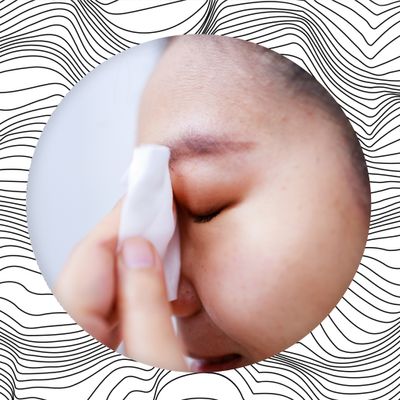
Cleanse, tone, and moisturize — it’s the three-step routine that most of us learned in high school (if not in practice, at least from ads at the local mall). The cleansing or moisturizing parts made sense, but to me, the toning step always seemed suspect. Was that bottle of clear stuff really necessary? And what did it even do, besides use up a lot of cotton balls?
“From a formulator’s perspective, there’s only a very loose definition of what a toner is,” said Gloria Lu, a cosmetic chemist and co-author of Skincare Decoded. “It generally just means some kind of low viscosity or runny, water-based formula.”
Indeed, the typical toner has changed a lot over the past several decades, along with its function. In the 1990s and early aughts, toners tended to be very acidic (also known as astringent — they were designed to constrict pores and make them appear small). Most were also heavy on the denatured alcohol, says dermatologist Ranella Hirsch. This was to counteract the alkaline properties of most facial cleansers made at the time, which could disrupt the skin’s pH balance.
“The skin’s pH level is naturally on the more acidic side,” says Dr. Hirsch. “So after you washed your face with a cleanser, a toner could help bring your skin back to the right pH level.” Maintaining that stable pH level plays an important role in skin-barrier function, keeping moisture in and minimizing irritation. But it’s not as much of a concern anymore, as most modern cleansers are pH balanced, negating the need for astringent toners.
The other reason that old-school toners were so popular was they gave your face that squeaky-clean feeling — which, as it turns out, might not have been so great after all. “You felt like they were deeply cleaning your skin,” says Dr. Hirsch. “You’d put some toner on a cotton pad and wipe it over your face, and when you looked at the pad, it would have all this dark gunk on it. Which was super gross but satisfying, because you thought it was dirt or grime that had been removed. In reality, it was just your normal skin oils that had oxidized and turned kind of grey.” Removing so much oil from the skin, especially with super-drying alcohol, can make the skin dehydrated and irritated; it can even have the opposite intended effect of spurring more oil production and leading to breakouts.
Nowadays, the toner landscape is very different, and most fall into two camps. “There’s exfoliating toners that often contain glycolic or lactic acid, and hydrating toners that contain glycerin, glycols and some plant extracts,” says Lu. The exfoliating type can be a useful addition for those with oily skin, while the hydrating kind can help dry skin types and give a dewy finish.
“If you apply a hydrating toner, and then put moisturizer over the top, the moisturizer will lock the moisture in,” says Dr. Hirsch. Hydrating toners are sometimes called essences, softeners or lotions, but these terms don’t have strict definitions — they just mean that a product has some skin-softening or hydrating benefits.
So, the million-dollar question (or realistically, maybe $32 question, if you’re shopping at Sephora): Should you use a toner? Dr. Hirsch and Lu agree that it’s not really necessary. “For most people’s busy lifestyles, it’s already hard to stick with a basic skincare routine, and adding more steps like a toner is not absolutely essential,” says Lu.
“Toner is never going to be the step in your routine that’s doing the heavy lifting,” adds Dr. Hirsch. “If acne or oiliness is a concern, a retinoid will play a bigger role, and if hydration is your goal, a targeted serum will have more of an effect.” But if you have a toner in your routine that you love, there’s no need to stop, she adds. “If it makes you happy, go for it.”




